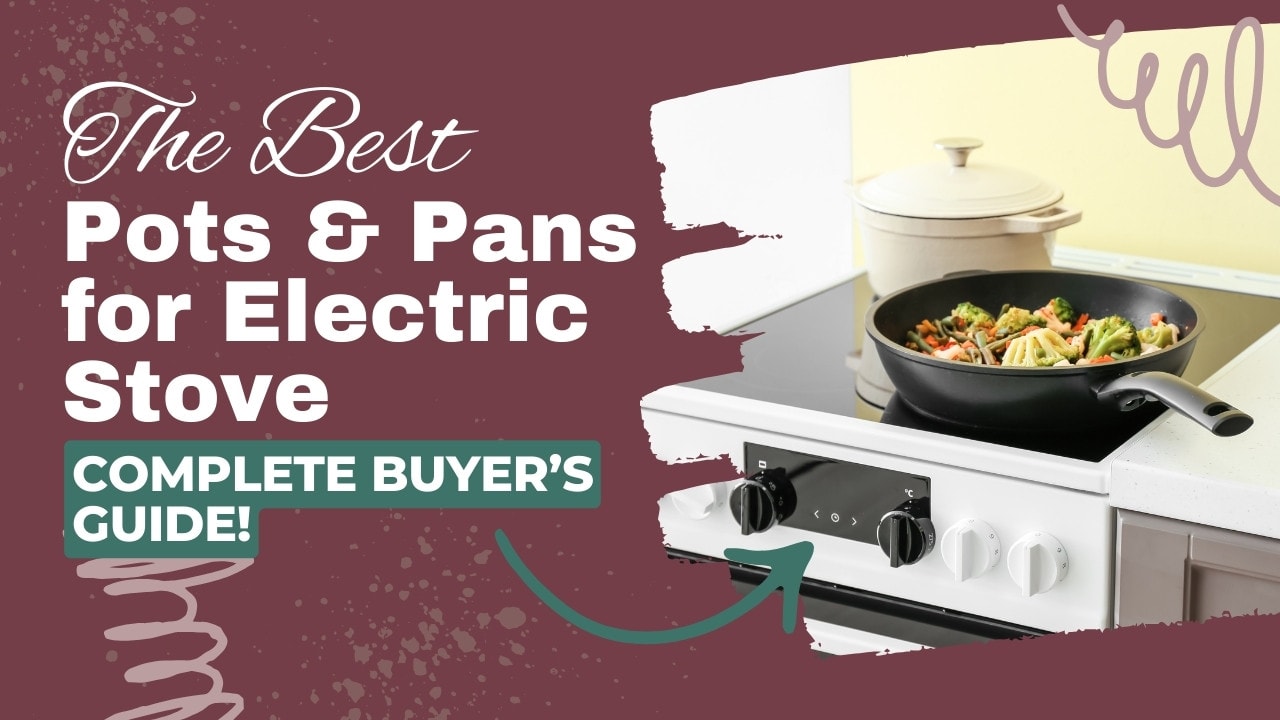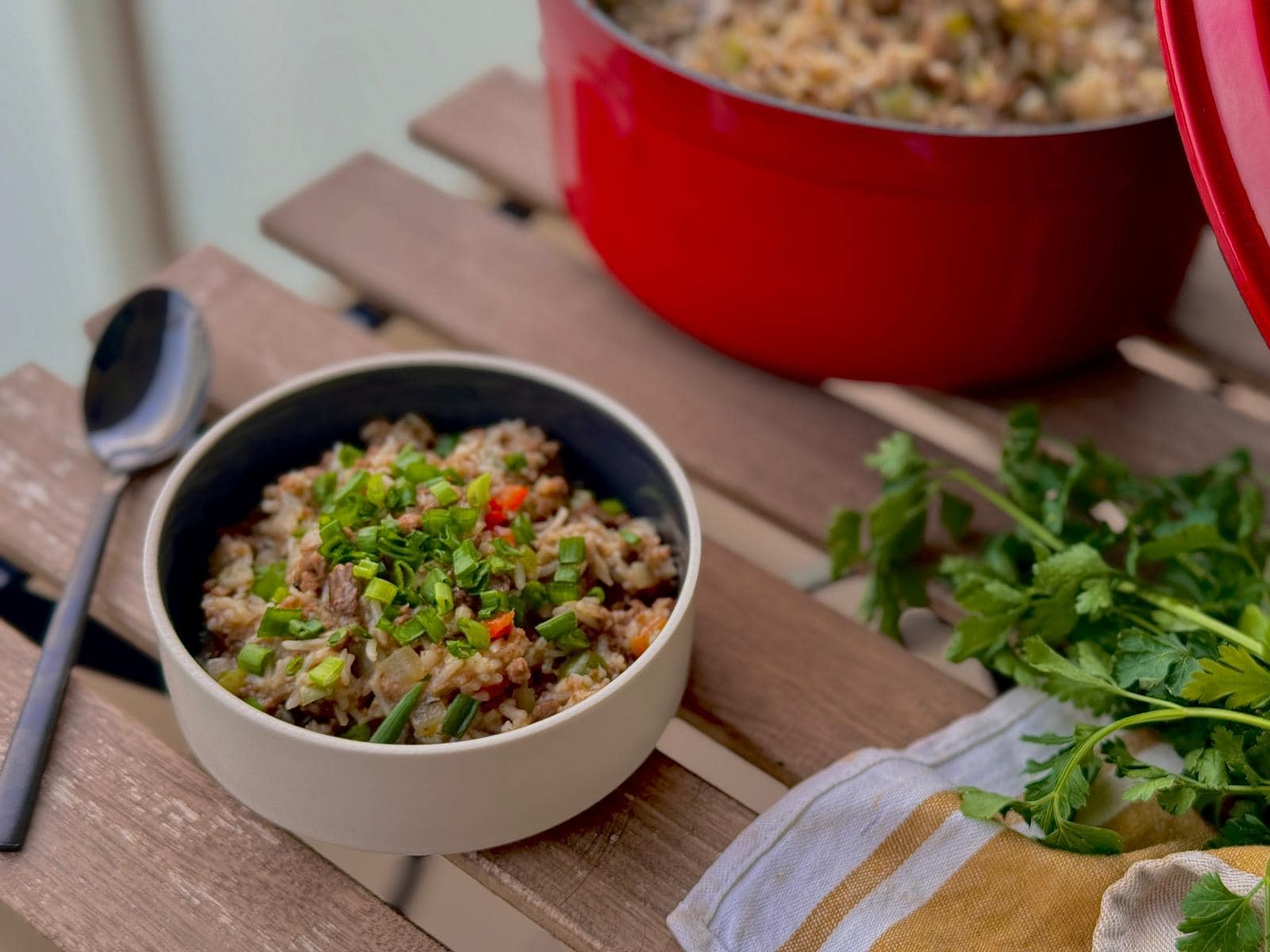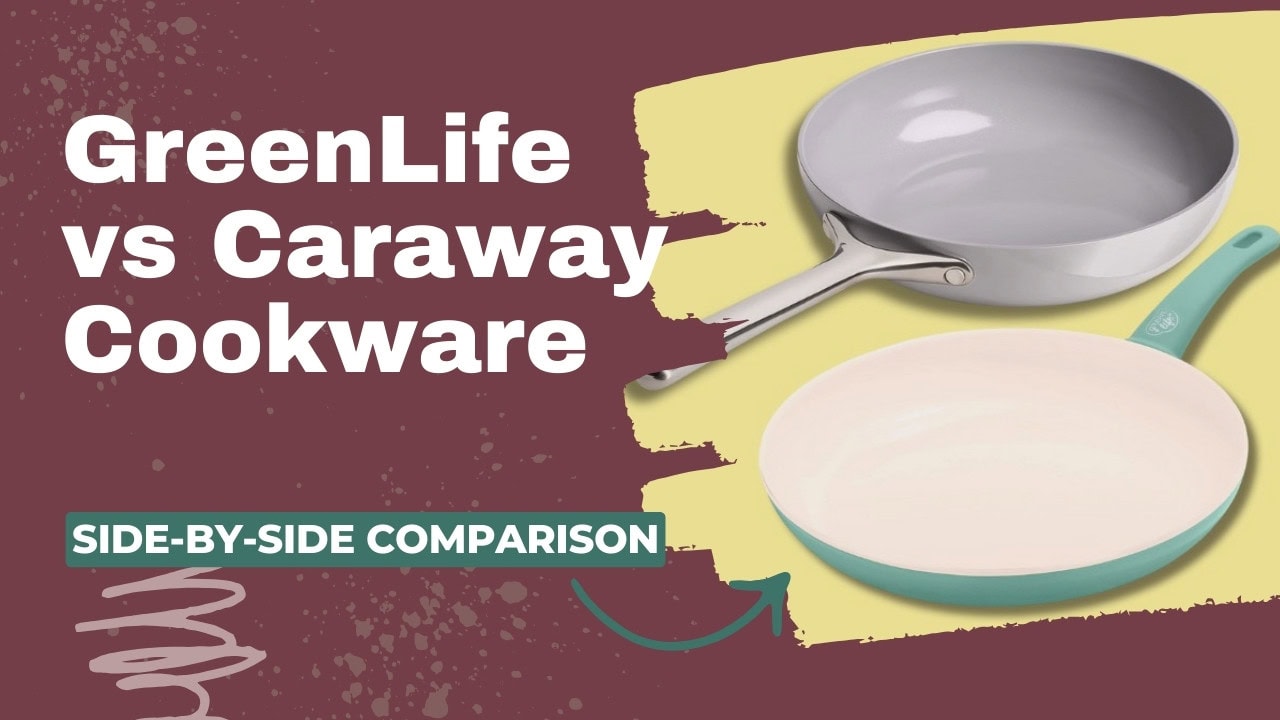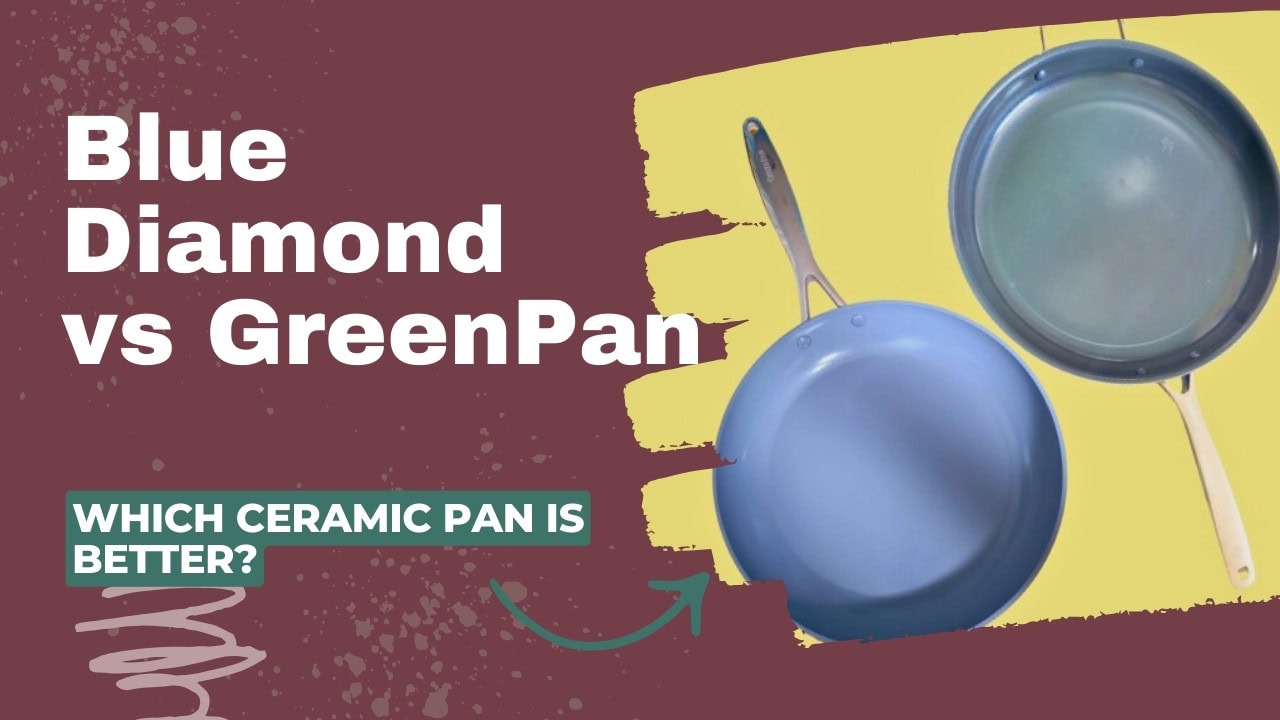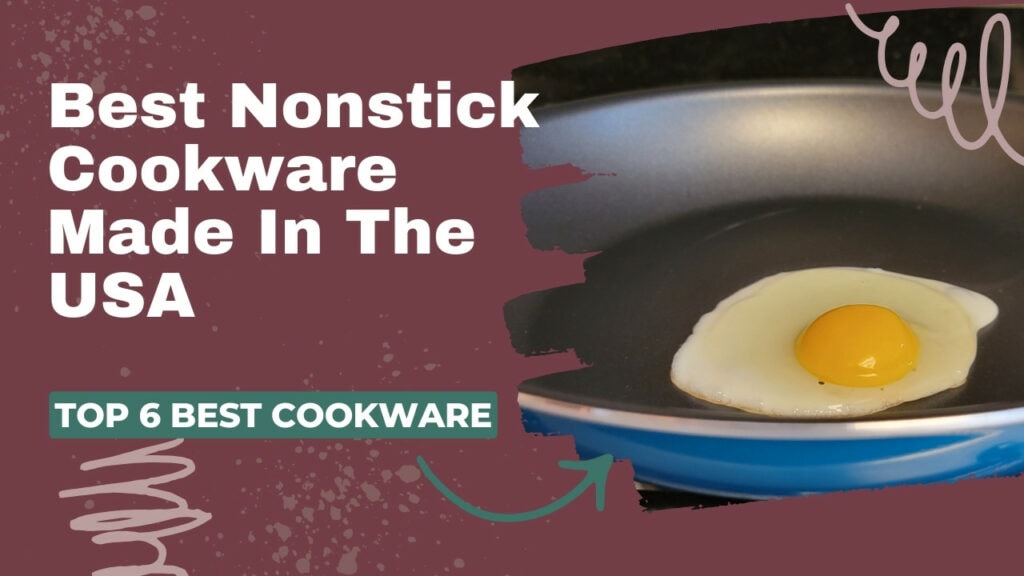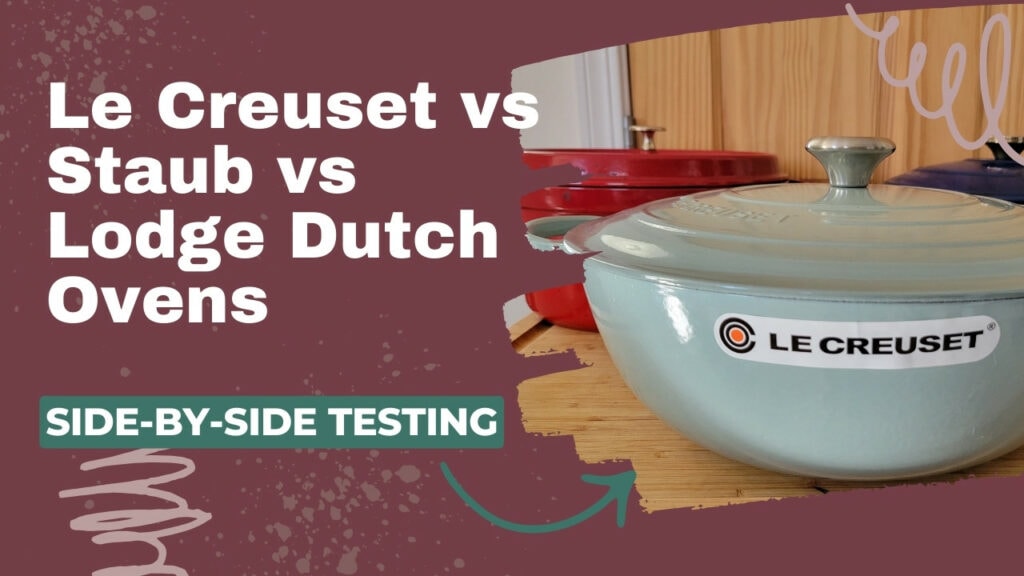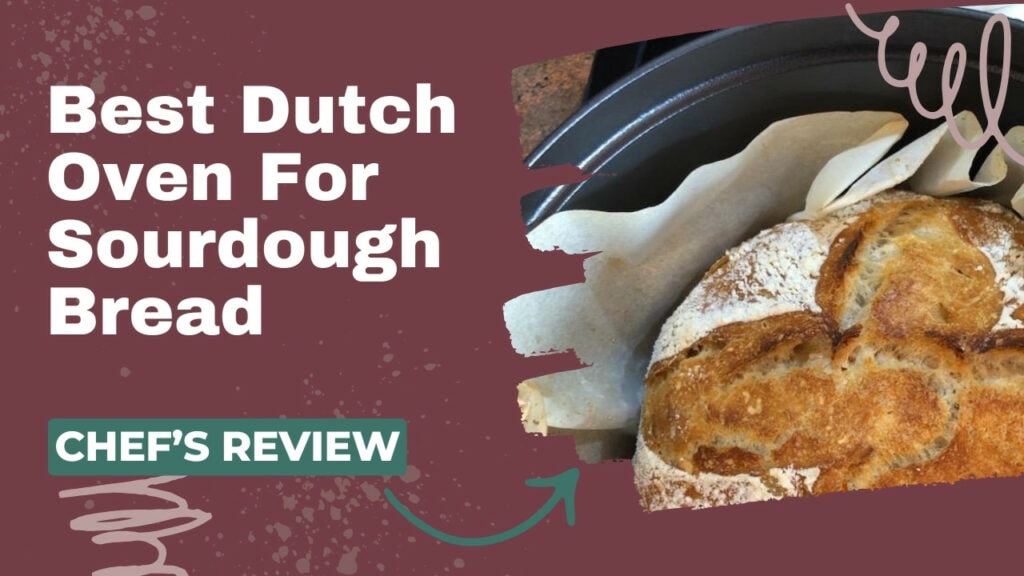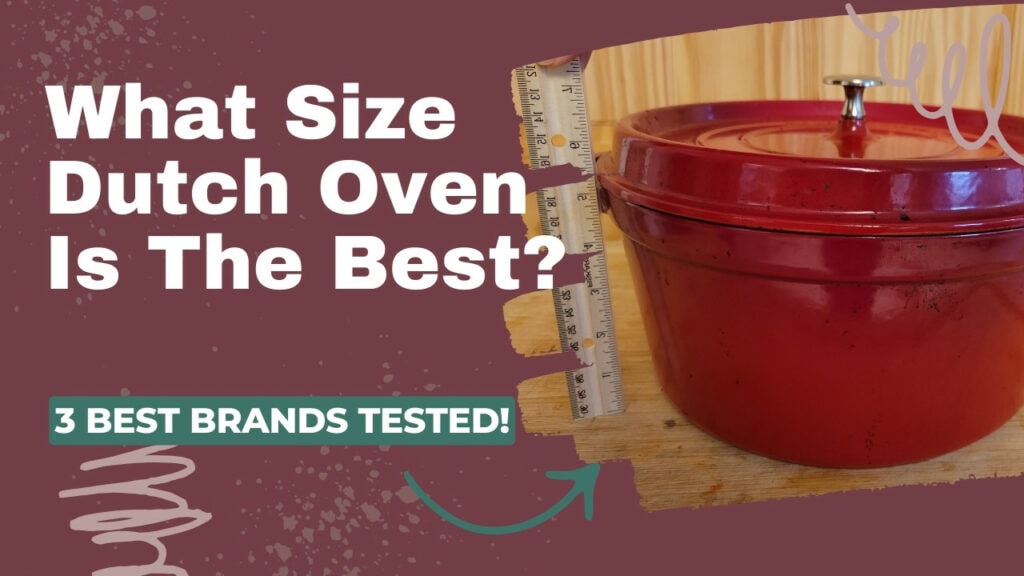Cooking on electric stove tops can be tricky. Poorly made pans buckle and warp, and hot spots can happen when the cookware material isn’t compatible with electric coil or glass cooktops.
The best pots and pans for electric stoves cookware can handle direct prolonged heat and respond quickly to temperature changes, making cooking fun – not frustrating.
What are the Best Pots and Pans for an Electric Stove?
Stainless steel, ceramic non-stick aluminum, and carbon steel pans are the best choices for electric cooktops. Cast iron can work if you handle it carefully. The base of each pot or pan, no matter the material, should be the same size as a heating element on your range for even heat distribution and a safe cooking experience.
Best Cookware Sets For Electric Stoves
The Challenges of Cooking on Electric Stoves
Electric stove tops are not as responsive as gas ranges. Both coil and glass cooktops take longer to heat up–and get very hot when they do. Gas stoves turn off instantaneously, but electric stovetops take longer to cool down – so your food can continue to cook when you’ve turned it off. This plays a huge factor in choosing the right pan for an electric stove. You want a pan that distributes heat well and cools quickly, but is heavy enough to resist burning.
I’ve tried all kinds of pots and pans on my electric cooktop. In this article, we’re going to discuss the best options for each of the cookware materials that work well on electric stoves. So no matter your preference, cooking style, or frequency of use, we’ve got you covered.
Best Overall - Gotham Steel - 20 Piece Pots and Pans Nonstick Cookware Set and Bakeware Set
20 Piece Set includes: 10.25" skillet with tempered glass lid, 8.5" fry pan, 5 quart stock pot with lid, 1.5 quart sauce pan with tempered glass lid, 2.5 quart sauce pan with lid, stainless steel steamer rack, 9.5" square shallow pan, 9.5” deep square casserole pan with tempered glass lid, stainless steel frying basket, steamer insert, 9.5” x 9.5” square baking pan, loaf pan, 9.5” round baking pan, 12” x 17” XL cookie sheet, 12 cup standard sized muffin pan.
The aluminum base on every pan in this set ensures even heat conductivity and distribution with no hot spots or dead zones. The three layers of titanium-infused ceramic coating is reinforced with diamonds to give optimal durability. Suitable for every cooktop (electric, glass, halogen, induction, and gas), it’s also oven-safe up to 500°F, so you can sear your steak and pop it in the oven to finish without having to change pans.
The ceramic coating will break down on high heat, so always cook using a medium-low heat and never leave the pan on the burner empty.
Quick Overview:
Pros
Cons
Best Overall Stainless Steel Set: T-Fal 11 Piece Stainless Steel Cookware Set
Set includes: 8” frypan, 10” frypan, 3.5 qt covered sauté, 1.5 qt covered saucepan, 3 qt covered saucepan, 7 qt stockpot, and a stainless steel steamer
Each piece in this full set of cookware has a 3-layered steel base – so it works well on both standard electric cooktops and electric induction. This provides quick, even heating, and heat retention on electric cooktops for optimal heat distribution and flavor.
I love the measurement markings on the inside of the saucepans in this set. The 3 qt saucepans have a straining lid and pouring spout.
This versatile 100% stainless steel cookware is not just compatible with every stovetop, but also oven safe to 500°F (260°C). A good set can last you a lifetime even if you switch to a different kind of range.
The handles often go first on stainless cookware, but this T-fal set has steel riveted handles – so don't be surprised if you end up passing it down to your children.
Quick Overview:
Pros
Cons
Greater Goods Cast Iron 10 inch Dutch Oven
Set includes: 10 inch cast iron dutch oven and lid
This cast iron dutch oven has a groove designed lid producing perfect air flow. Fantastic for producing a succulent roast or a satisfyingly crunchy crust on a loaf of sourdough. Pre Seasoned with 100% organic flaxseed oil this Dutch oven is non-stick straight out of the box. I love that the handles are ergonomic. Because cast iron is heavy I know I won’t drop this one as easily as other brands without ergonomic handles and damage the electric cooktop.
Quick Overview:
Pros
Cons
All-Clad D3 3-Ply Stainless Steel Fry Pan With Lid
Set includes: 12 inch fry pan and lid
Engineered, bonded, and assembled in Canonsburg, PA since 1971, this fry pan surpasses others in its class because the 3-ply base coating heats safely to 600°F (315°C) without warping.
Handling higher temperatures makes this fry pan perfect for electric cooktops. Also because of this fry pan's higher heat tolerance, it means it’s oven and broiler-safe, making it more versatile than other frying pans. High-heat cooking means it’s perfect for frying up that big catfish or full breakfast.
Quick Overview:
Pros
Cons
Souped Up Recipes Carbon Steel Wok
Set includes: 12 inch fry pan and lid
I love woks and have used them my whole life. The wide flat bottom on this wok makes it perfect for electric stovetops. It comes with easy-to-follow instructions on wok care and when followed property, after the first few uses it should be non-stick for life. The wooden lid is perfect for steaming dumplings, fish, vegetables and sticky buns. Very versatile, this one wok can do everything a saucepan, steamer and fry pan can do.
Quick Overview:
Pros
Cons
Best Cast Iron for Electric Stoves: Lodge 10.25” Skillet
Set includes: cast iron skillet and red silicone hot handle holder
Cast iron skillets can be used on every heat source, from stovetop to open flame. But they may not be the most suitable choice for electric cooktops. Because of their weight they can bend coils or break glass stovetops if placed down too hard or dropped. Taking a long time to heat up on electric stovetops, they also take a long time to cool down. This is great if you’re making a stew or an osso bucco, but it also makes it easy to burn your meals.
While not ideal, you totally can use a cast iron skillet on your electric cooktop if you want to tackle the learning curve. The 10.25 inch is the most popular size, which is why I recommend this Lodge skillet.
Quick Overview:
Pros
Cons
Sensarte 9.5 Inch Ceramic Non-Stick Grill Pan
Set includes: grill pan
Remember how we said that cast iron takes a long time to heat up? Aluminum gets hot way faster and more evenly than cast iron on electric stoves – and that’s why I love this ceramic-coated grill pan! Using this two-pound aluminum griddle, I can still get perfect grill marks on my brats and burgers without heavy cast iron damaging my stovetop.
This pan is coated with ILAG’s “Granitec” ceramic, the exact same coating used in the very popular Carote Granite pans. It can’t withstand temps quite as high as a cast iron grill – but since the aluminum core conducts heat so well, you don’t need to turn your burner on full blast to get similar results. In that way, it even reduces electricity use!
I love the pour spouts either side to pour off fat for a healthier cooking style. And the high sides help with spatter control. At only two pounds it’s easier to use than cast iron and safer for your electric cooktop.
Quick Overview:
Pros
Cons
Buying Cookware for An Electric Stove: Buying Guide
Electric stove tops, both coil top and glass top, take longer to heat up and cool off than gas ranges. Some cookware handle this better than others. Let’s take a look at the differences between the stove tops, including their heating methods and temperature control.
What’s the Difference Between a Glass and Electric Stove?
An electric glass top stove has the electric heating element insulated under a solid piece of tempered glass. An electric coil stovetop has the coils (heating element) on top so your cookware has direct contact with the heat source.
Coil Electric Stove Top
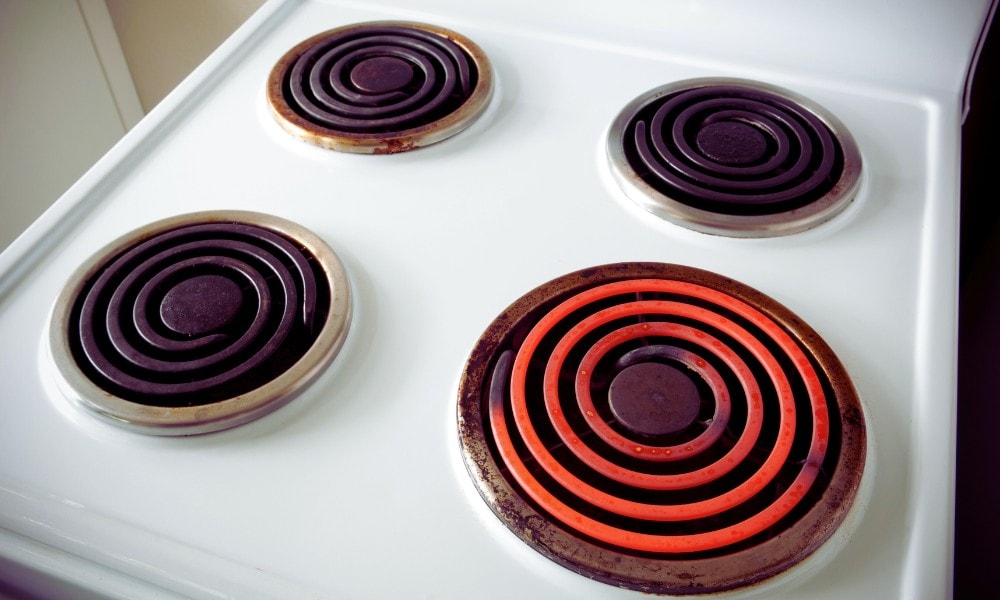
Coil stoves are cheaper than glass stovetops, so they are found in many homes. While using a coil electric stove your cookware sits directly on the heat source which means it can buckle or warp, form hotspots and produce uneven cooking. You can lift the coil out of the metal bowl under it and pop the bowl in the dishwasher for easy cleaning.
Glass Electric Stove Tops
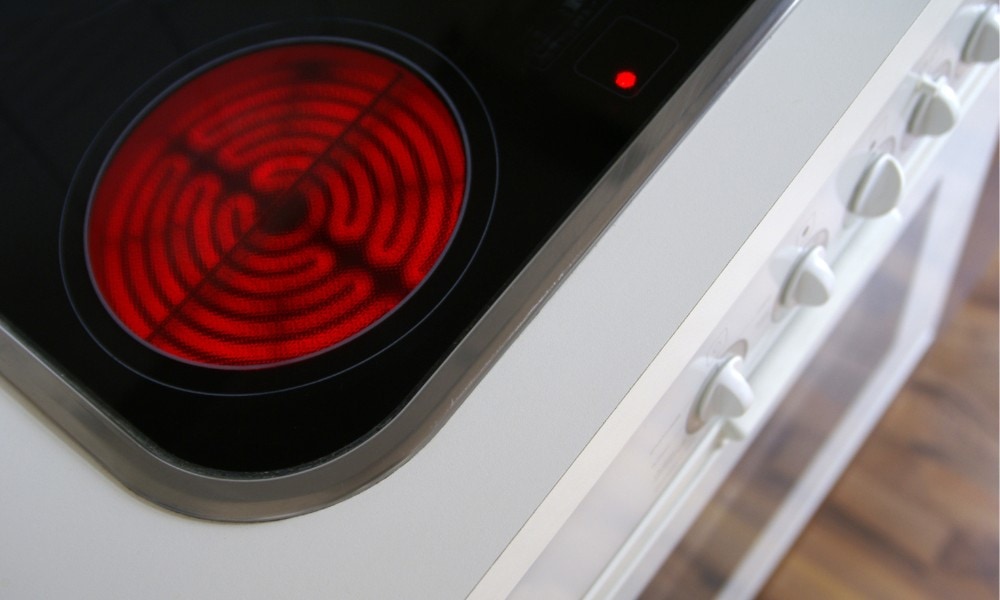
More expensive than a coil cooktop – up to double the price! – a glass top electric stove looks more modern and stylish as well. Cookware doesn’t touch the heating element on a glass stove, so it’s a little gentler than coil cooktops. Being made of glass, it’s more susceptible to cracking and breaking.
What’s the Best Cookware Material for Electric Stoves?
Let’s discuss the pros and cons, performance, and durability of the different cookware materials focusing on coil stovetops.
Stainless Steel
Pros: The great thing about stainless steel is that it won’t warp under the direct heat of a coil stovetop. Although it heats up slowly compared to aluminum, it has great heat retention and durability. Look for cookware that has a fully clad aluminum core, this will heat quicker than impact-bonded steel.
Cons: Stainless steel is heavy. It could damage the glass cooktop or coil heating element if dropped.
Handy tip: Always make sure the base of the pot is the same size as the heating element. This provides even cooking without hot spots in the middle and cool spots around the outside.
Related article: Best Budget Stainless Steel Cookware
Nonstick Coatings (PTFE)
There is a wide range of nonstick coated pans on the market. Let’s look at some things to consider when purchasing one of them.
Pros: Aluminum cores in these pans heat quickly and distribute the heat evenly. Look for a hard anodized aluminum core or stainless steel core because it’s common for a thin aluminum core to warp under the direct heat of an electric stove. Look for shiny, flat metal (stainless or aluminum) bases on the underside of aluminum pans. Pots with painted or enameled undersides will get scratched quickly and burnt on an electric coil.
Cons: The problem with electric stoves is that the heat DOESN’T drop quickly (unlike gas stoves) so you need to prevent your nonstick coated pans from getting too hot. If Teflon gets too hot it can release toxic fumes producing flu-like symptoms (headache, chills, fever) that can harm you and your pets.
Handy tip: Keep your stove top on medium heat from the beginning even if it takes longer to heat up.
Ceramic Coatings - Aluminum Core
Pros: Ceramic nonstick coatings are often billed as “healthier” than traditional nonstick coatings because they won’t release toxic fumes, even at high temperatures. But you should still only use ceramic pans on medium heat. High heat will reduce the effectiveness of the coating real quick. Thankfully, because aluminum has great heat distribution it’s not as important for the pan to match the size of the heating element.
Cons: Ceramic-coated pans can be expensive and, realistically speaking, the lifespan of their non-stick coating is usually limited to 2-3 years at best.
Handy tip: Cooking on medium-low can extend the life of your ceramic cookware to 2-5 years, especially if you buy a top-rated brand like GreenPan.
Copper
Pros: Copper is an amazing heat conductor making it super responsive to temperature changes.
Cons: An electric stove’s slow heating may not be the best way to get the most out of copper cookware. Although hammered copper exteriors on pans are drop-dead gorgeous, they will scratch on a coil heating element. Additionally, copper cookware is on the expensive side.
Handy tip: Because copper heats so well, keep the temperatures low.
Related article: The Best Authentic Copper Cookware
Cast Iron
Pros: Cast iron withstands the direct heat of electric cooktops well. The great heat distribution of iron makes an even cooking surface without hot spots even if the base is larger than the cooking element.
Cons: Heavy cast iron can break or scratch glass cooktops and bend coil ones. Finding a pan the same size as your heating element can be difficult.
Handy tip: Preheat the cast iron pan for a few minutes on a lower heat while you prep the food. Cast iron is less prone to overheating than other cookware.
Enamel Cast Iron
Pros: Enamel cast iron has most of the same pros and cons as raw cast iron. However, it is semi-nonstick and won’t leach iron into your food, thanks to the porcelain enamel coating.
Cons: The colored enamel on the bottom of the pan can be scratched by coil cooktops or burn on the direct heat.
Handy tip: Using silicone or wooden utensils and cooking on a medium heat will increase the longevity of your pan's life.
Related article: The Best Enamel Cast Iron Cookware
Carbon Steel
Pros: Carbon steel strikes a good balance. It’s lighter weight than stainless steel and cast iron but heavy enough so it won’t warp. It’s very suitable for electric cooktops!
Cons: Be sure that the bottom is the same size as your heating element for most efficient and even cooking.
Handy tip: Although carbon steel cookware is semi-nonstick upon arrival, it still needs seasoning to make it 100% nonstick.
Other Considerations
Size
What size pans do you need? Are you cooking for a family of six, a single or couple, or, do you host frequent dinner parties? Large or small, the pan base should be the same size as the heating element for best results. If you can’t match sizes, opt for aluminum pans, since they distribute the heat so well.
Versatility
Do you want to be able to go oven-to-stove with your cookware? Sear and seal a succulent sirloin then finish it in the oven for ultimate tenderness? Then be sure to look for oven-safe cookware like stainless steel, carbon steel, and cast iron.
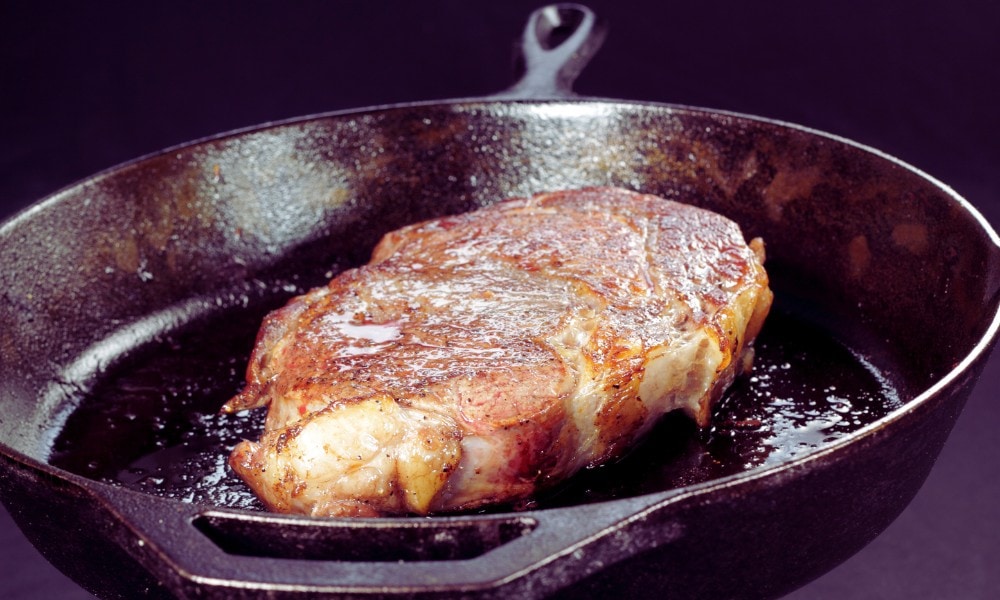
Ease of care
Some cookware like stainless steel may take a little more time and elbow grease to clean than nonstick cookware. Or some, like carbon steel and cast iron, need maintenance to make sure they’re perfectly seasoned. Whereas a nonstick coating may just need a wipe with a damp cloth and paper towel.
Remember, even if cookware is advertised as being dishwasher safe, the high temperatures of dishwashers can break down nonstick and ceramic coatings.
Longevity and warranty
If you’re spending the money on higher priced cookware then look at the warranties and guarantees. A lot of guarantees say ‘lifetime limited warranty'' – but the “limited” clause is pretty limited, and may not cover the direct heat of coil electric stovetops.
What Cookware Shouldn’t Be Used on Electric Stoves?
Natural or single-layer aluminum cookware may warp on high heat, so it’s not ideal for electric stoves. But don’t confuse it with hard anodized ceramic-coated aluminum, which is actually one of the best options for electric stovetops because it’s lightweight and spreads the heat quickly across the pan.
As we’ve mentioned in this article, cast iron is not the best choice because it’s so heavy that you run the risk of damaging your coils or glass cooktop.
Summary
Once you know the basic criteria for the best cookware for electric stoves, you may choose to invest in a full set of electric-compatible pots and pans. In that case, I’d recommend these two sets:
#1 Recommendation: Gotham Steel Cookware Set
Stainless steel - 20-piece Gotham Steel Cookware and Bakeware set has so many pieces that you will hardly need to buy anything else for your kitchen.
Nonstick cookware set - 11 piece T-Fal set has a thick induction base for even heating and cooking. Maintained well, this set will last decades.

